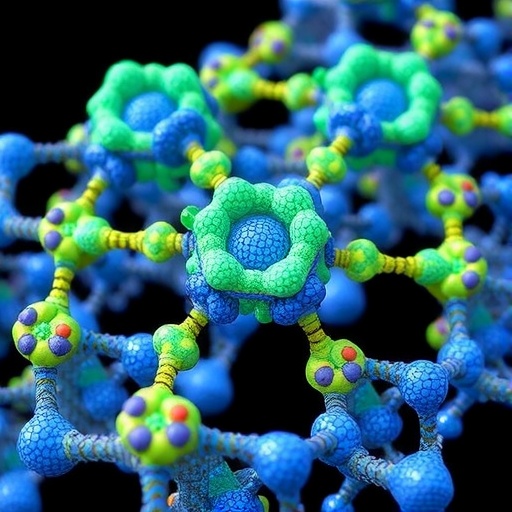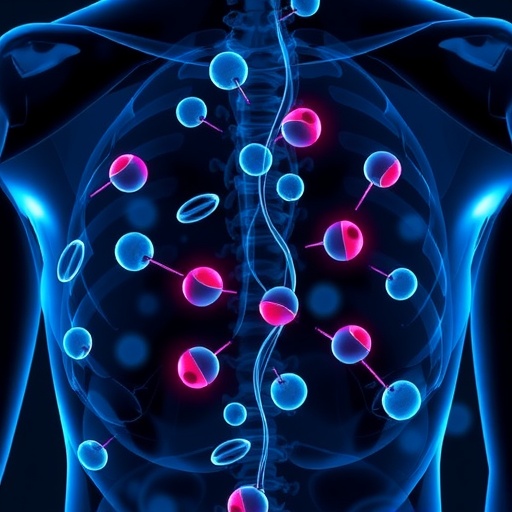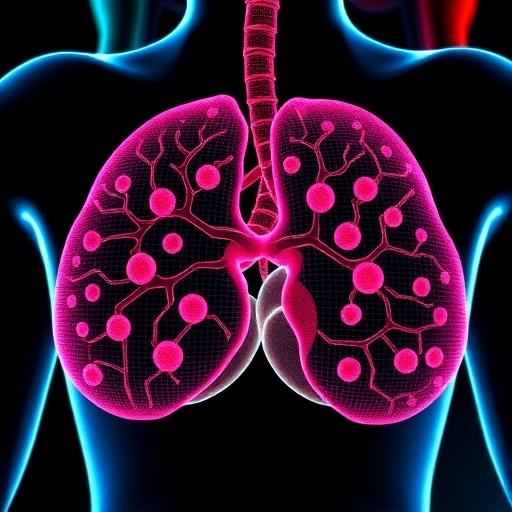In a groundbreaking study, researchers have made significant strides in the field of drug delivery systems by unveiling the dual character of surface engineering on SN38 prodrug nano-assemblies. This innovative research, led by eminent scientists including Li, YQ., Kuang, ZY., and Zhang, BY., is set to reshape our understanding of the pharmacological behavior of nano-assemblies in both in vitro and in vivo contexts. The findings, published in “Military Medical Research,” highlight how these engineered nanoparticles can exhibit divergent effects that could dramatically improve therapeutic outcomes, particularly in cancer treatments.
At the heart of this study is the prodrug SN38, a potent active metabolite of the well-known chemotherapy agent Irinotecan. SN38 has been shown to possess remarkable anticancer properties, but its clinical application has been severely limited by solubility and systemic toxicity issues. By harnessing the power of nano-assemblies, researchers have found a way to improve the stability and bioavailability of SN38, thereby enhancing its therapeutic efficacy while minimizing adverse effects. This offers a promising avenue for enhanced drug delivery strategies that aim at maximizing the potential of established chemotherapeutics.
The innovative aspect of this research lies in the dual character of surface engineering applied to the SN38 prodrug nano-assemblies. By manipulating the surface properties of these nanoparticles, the research team was able to tailor their interactions with biological environments uniquely. This customization plays a crucial role in determining how the drug is released, how it is absorbed by the target tissues, and how effectively it can exert its anticancer effects.
One of the standout features of the study was the emphasis on the differential behaviors of the engineered nano-assemblies in in vitro and in vivo settings. In vitro studies revealed that the surface modifications significantly impacted cellular uptake rates, leading to enhanced efficacy in tumor cell lines. The nanoparticles demonstrated a swift interaction profile with cancer cells, allowing for higher concentrations of SN38 delivery directly where it is most needed. This marked improvement in cellular uptake not only underpins the potential for increased treatment efficacy but also sets a precedent for future research in this area.
The in vivo studies took the findings a step further by employing animal models, providing crucial insights into the pharmacokinetics and biodistribution of the nano-assemblies. Remarkably, the researchers found that the surface-engineered nano-assemblies exhibited a higher accumulation of SN38 in tumor tissues compared to their unmodified counterparts. This notable finding underscores the importance of surface engineering in developing more targeted cancer therapies, enabling higher doses to reach malignant tissues while sparing healthy cells.
Moreover, the study emphasized the influence of surface charge and hydrophilicity on the behavior of the SN38 prodrug nano-assemblies. These factors play a pivotal role in determining how the nanoparticles interact with biological barriers, including cell membranes and vascular endothelial cells. For instance, positively charged particles showed increased interaction rates with negatively charged cell membranes, facilitating enhanced cellular internalization. Conversely, the hydrophilicity of the surface modifications dictated the dispersion of the nanoparticles in biological fluids, impacting their circulation time and distribution throughout the body.
The implications of these findings extend beyond mere efficacy. The dual character of surface engineering may also hold promise in addressing the long-standing challenge of drug resistance, particularly in cancer therapies, by ensuring that higher concentrations of the drug can be delivered directly to resistant cell populations. By circumventing classical mechanisms of drug resistance, engineered nanoparticles could offer a novel strategy to enhance the effectiveness of chemotherapy, potentially leading to better patient outcomes.
Furthermore, the research team plans to explore the possibilities of this technology in combination therapies, where SN38 could be used alongside other agents to trigger synergistic effects. Such strategic combinations could hold the key to overcoming resistance mechanisms, amplifying the total therapeutic impact of cancer treatment regimens.
Another pivotal element of this research is its contribution to personalized medicine. The ability to engineer and modify nanoparticles to fit specific patient profiles marks a radical shift towards customized treatment protocols. By tailoring the surface features of nano-assemblies to match the unique biological environment of individual tumors, researchers could optimize drug delivery on a case-by-case basis. This highly personalized approach opens the door to more effective and less toxic interventions.
The publication of these findings in “Military Medical Research” comes at a crucial time in the fight against cancer, as newer therapeutic approaches are desperately needed in the clinical landscape. The quest to improve drug delivery systems has garnered tremendous interest over the years, and this research embodies the cutting-edge advances in nanomedicine. It raises the bar for future studies that seek to explore the interplay between surface modifications and therapeutic outcomes.
The insights gained from the research have set a foundation for future investigations. The scientific community is optimistic that these nano-assemblies can serve as a blueprint for developing more effective drug delivery systems across various therapeutic areas, not limited to oncology. With ongoing advancements in nanotechnology and biopharmaceuticals, the horizon looks promising for achieving more targeted and effective treatments for a myriad of diseases.
Looking ahead, the research will undoubtedly inspire further exploration into the dual nature of surface engineering. Scientists will continue to investigate the underlying mechanisms that govern the interactions between engineered nanoparticles and biological systems, with the ultimate goal of translating these findings into clinical practice. As this field evolves, the potential for enhanced patient care through innovative drug delivery systems is becoming increasingly apparent. Exciting times lie ahead in the realm of nanomedicine, as researchers strive to unlock the full potential of engineered nanoparticles in transforming therapeutic landscapes.
In conclusion, the dual character of surface engineering on SN38 prodrug nano-assemblies represents a promising breakthrough in the pharmacological sciences. By elucidating the divergent effects observed in vitro and in vivo, this research not only addresses current challenges in drug delivery but also heralds a new era of tailored cancer therapies. Given the rise of personalized medicine and the necessity for innovative solutions, the future of this field may very well pivot on the successes of such pioneering studies, paving the way for more effective and less toxic cancer treatments.
Subject of Research: Dual character of surface engineering on SN38 prodrug nano-assemblies.
Article Title: Dual character of surface engineering on SN38 prodrug nano-assemblies: divergent effects on in vitro and in vivo behavior.
Article References:
Li, YQ., Kuang, ZY., Zhang, BY. et al. Dual character of surface engineering on SN38 prodrug nano-assemblies: divergent effects on in vitro and in vivo behavior.
Military Med Res 12, 60 (2025). https://doi.org/10.1186/s40779-025-00648-6
Image Credits: AI Generated
DOI: 10.1186/s40779-025-00648-6
Keywords: SN38, prodrug, nano-assemblies, surface engineering, drug delivery, cancer therapy, personalized medicine, in vitro, in vivo.
Tags: advanced drug delivery strategiescancer treatment innovationsdrug delivery systemsenhancing drug bioavailabilityIrinotecan active metaboliteminimizing systemic toxicityovercoming chemotherapy limitationspharmacological behavior of nanoparticlesSN38 prodrug nano-assembliesstability of nano-assembliessurface engineering techniquestherapeutic outcomes in oncology





